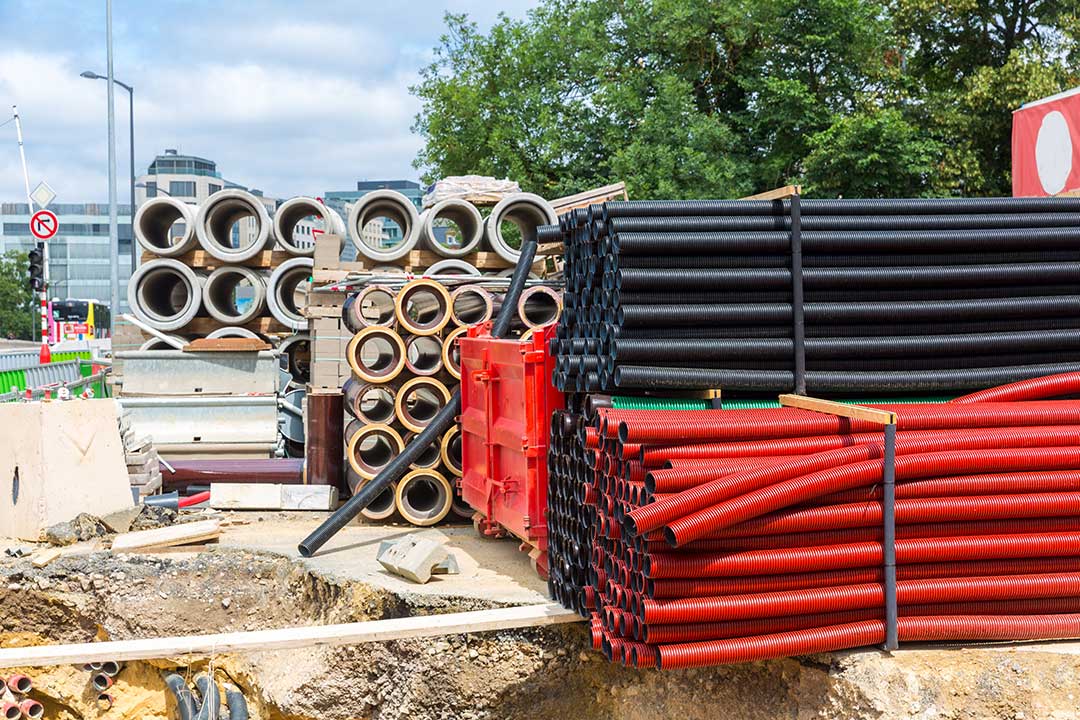The oil and gas industry faces unique challenges when it comes to pipeline infrastructure. As pressure requirements increase and safety standards evolve, proper techniques for fusing high-density polyethylene (HDPE) fittings to gas mains become crucial. Ensuring both efficiency and safety in pipeline operations requires careful consideration of essential precautions and best practices for HDPE fusion in oil and gas poly pipe systems.
The Shift in Gas Pipe Design Factors
Recent changes in gas system codes have led to increased maximum operating pressures (MOP) for gas services. On January 22, 2019, the United States Department of Transportation (DOT) Pipeline and Hazardous Materials Safety Administration (PHMSA) approved the use of a 0.40 design factor for polyethylene gas piping systems.
This change allows for higher internal pressures in polyethylene gas piping systems. While the long-term internal pressure capability of these products remains within safe limits, the increased MOP requires more careful attention when fusing service and branch saddles and self-tapping tees to live PE mains.
The shift in design factors improves system efficiency while maintaining safety standards. However, it demands enhanced precision during pipeline installation and maintenance, particularly at connection points.
Key Considerations for HDPE Fusion
When working with HDPE fittings and oil and gas poly pipe, several factors significantly impact the risk of blowouts during fusion, especially in pressurized systems:
1. Pipe Diameter
Larger diameters distribute stress over more surface area, potentially reducing blowout risk. Smaller diameters may be more susceptible to blowouts due to the reduced surface area and potentially thinner walls.
2. Surface Temperature
Ideal fusion temperatures range between 400°F and 450°F (204°C to 232°C). Ambient temperature affects heating time. Overheating weakens pipes, increasing blowout risk, while underheating results in incomplete fusion.
3. Wall Thickness (DR – Dimension Ratio)
Higher DR values indicate thinner walls relative to diameter. These pipes are more prone to blowouts during fusion, especially under high internal pressures. Lower DR values provide more pressure resistance but require more heat and time to fuse.
4. Internal Pressure
Higher internal pressures increase blowout risk during fusion. Balancing heating time and pressure application is crucial. Pressure reduction may be necessary before fusing on live systems.
5. Fusion Procedure
Includes heating time, cooling time, interfacial pressure, and alignment. Following manufacturer-recommended procedures and industry standards iscritical. Different fusion methods may be more appropriate depending on specific applications.
These interconnected factors must be considered holistically when performing HDPE fusion. Proper training and regular procedure updates are essential for maintaining safety and integrity in HDPE pipeline systems.
Precautions for Saddle Fusion
Saddle fusion involves simultaneously melting a surface area of the main pipe and the mating fitting base for joining. The process requires careful control to ensure the mechanical strength of the heated main remains high enough to contain the internal pressure.
Under a 0.40 design factor, the allowable hoop stress in the pipe wall is 25% greater compared to the 0.32 design factor. This increase in stress elevates the potential for gas main blowout during the fusion of branch connection fittings.
| Design Factor | Allowable Hoop Stress |
| 0.32 | Base value |
| 0.40 | 25% increase |
Risk Factors for Blowouts
Research conducted by Plastics Pipe Institute (PPI) member companies has identified several risk factors for blowouts during saddle fusion:
- Smaller diameter pipes face greater risk.
- Elevated pipe surface temperatures (above 100°F/38°C) increase risk.
- Higher DR (thinner wall) pipes are more susceptible to blowouts.
These findings suggest that procedures suitable for saddle fusion at 0.32 design factor stresses may be unsuitable at higher stresses, such as those encountered with a 0.40 design factor.
Recommended Practices for Safe HDPE Fusion
To ensure safe and effective HDPE fusion in oil and gas poly pipe systems, the following practices are recommended:
1. Procedure Evaluation
Gas system operators should thoroughly evaluate their procedures for attaching service/branch saddles and self-tapping tees to live PE mains. This evaluation helps ensure that personnel and property are not exposed to increased hazards from higher gas main pressures or increased operating wall stresses in higher DR pipes.
2. Fusion Guidelines
The Plastics Pipe Institute recommends using their Technical Report TR-41 and ASTM F2620 for the fusion of service and branch saddles and self-tapping tees. However, these guidelines come with specific limitations based on HDPE pipe size and DR:
| Pipe Size | Maximum DR |
| 2″ IPS and smaller | DR 11 |
| 3″ | DR 13.5 |
| 4″ | DR 17 |
| 6″ | DR 21 |
| >6″ | DR 21 |
3. Temperature Considerations
Pipe surface temperature plays an important role in the fusion process. Operators should monitor and account for elevated temperatures, especially when working in hot environments or with pipes exposed to direct sunlight.
4. Proper Training and Qualification
Under U.S. and Canadian regulations, gas pipeline system operators are required to have qualified fusion procedures and to qualify persons who work on and inspect their pipelines. Ensuring proper training and qualification of personnel is essential for safe HDPE fusion operations.
The Importance of Proper HDPE Fitting Selection
Choosing the right HDPE fittings for oil and gas poly pipe systems is critical for ensuring the long-term performance and safety of these systems. Key factors to consider include:
- Pressure rating
- Chemical compatibility
- Temperature resistance
- UV resistance (for above-ground applications)
- Mechanical strength
High-quality HDPE fittings, when properly fused, can provide a leak-free, corrosion-resistant connection that maintains the integrity of the pipeline system.
Advancements and Future Trends in HDPE Fusion Technology
The oil and gas industry’s reliance on HDPE piping systems has spurred significant technological progress. These advancements aim to boost safety, efficiency, and overall performance in HDPE fusion processes.
| Innovation/Trend | Description |
| Automated Fusion Machines | Reduce errors, improve consistency and tracking |
| Non-Destructive Testing | Check fusion quality without damage |
| Smart Fittings | Built-in sensors for real-time monitoring |
| Higher Pressure Ratings | New materials for increased pressure tolerance |
| IoT Integration | Internet-connected systems for better monitoring |
| Trenchless Installation | Specialized fittings for no-dig methods |
| Faster Fusion Methods | Quicker installation, reduced labor costs |
These advancements highlight the evolution of HDPE fusion technology. Staying informed about these developments is important for industry professionals to improve operations, enhance safety, and remain competitive.
Ensuring Safe and Efficient HDPE Fusion with Coastal Resource Group
Coastal Resource Group understands the critical nature of HDPE fusion in oil and gas poly pipe systems. Our team of experts is well-versed in the latest safety precautions and best practices for fusing HDPE fittings to gas mains. We offer:
- High-quality HDPE fittings suitable for high-pressure applications.
- Expert advice on proper fusion techniques and procedures.
- Training and support for your installation teams.
- 24/7 availability to address any supply emergencies.
By partnering with Coastal Resource Group for your HDPE fusion needs, you can ensure that your oil and gas pipeline projects are completed safely, efficiently, and in compliance with the latest industry standards. Our commitment to fast delivery and comprehensive supply options means you’ll have the right materials when and where you need them, keeping your projects on track and your operations running smoothly.
Don’t let fusion safety concerns slow down your pipeline projects. Contact Coastal Resource Group today at (281) 549-4132 to learn how we can support your HDPE fusion needs and help you maintain the highest standards of safety and efficiency in your oil and gas operations.


